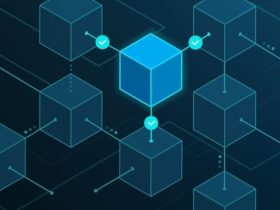In today’s rapidly evolving technological landscape, artificial intelligence continues to reshape industries, redefine workflows, and spark both optimism and apprehension among stakeholders. From the factory floor to the fertility clinic, AI-driven solutions are accelerating processes, displacing traditional models, and raising critical questions about ethics, economics, and human agency. In this op-ed–style briefing, we dissect five major AI-related developments from June 10–11, 2025, offering succinct yet insightful analysis on their implications for businesses, policymakers, and society at large.
1. Mechanization Meets Automation: AI’s encroachment on routine labor
Key Development
A recent New York Times exposé highlights the accelerating use of machine learning and robotics to mechanize tasks once deemed too unpredictable or nuanced for AI. From auto assembly to data entry, employers are deploying sophisticated models to optimize efficiency, reduce costs, and minimize human error.
Analysis & Commentary
While automation has long been part of industrial evolution, today’s AI systems can interpret sensor data, adapt to new production anomalies, and even anticipate maintenance needs—tasks that previously required trained human oversight. This leap is powered by advances in reinforcement learning and real-time computer vision, enabling robots to handle “surprising” work environments with minimal supervision. However, the productivity boost comes at a social cost: lower-skilled workers face displacement, and communities built around legacy manufacturing jobs risk economic stagnation unless retraining initiatives keep pace.
Moreover, as AI takes over repetitive tasks, human labor will concentrate on creative problem-solving, interpersonal roles, and oversight of AI systems themselves. Companies like IKEA have demonstrated that, rather than outright job cuts, AI can complement employees—retraining 8,500 service reps to focus on interior design advice instead of routine inquiries—yielding a 14% productivity gain overall. Yet, these benefits are unevenly distributed: smaller businesses may lack resources for large-scale reskilling, exacerbating the digital divide and deepening inequalities.
Source: The New York Times
2. News Outlets in Peril: Google’s AI‑powered search challenges publisher economics
Key Development
As Google rolls out its AI Summary features—“AI Overviews” and “AI Mode”—publishers report steep declines in referral traffic. Data shows that Business Insider experienced a 55% drop in organic search visits between April 2022 and April 2025, while HuffPost and The Washington Post saw declines near 50% and 48%, respectively.
Analysis & Commentary
Google’s shift from a “blue links” paradigm to an “answer engine” fundamentally alters the news ecosystem. By synthesizing content directly in search results, AI-driven summaries satisfy user queries on the spot—eliminating the need for clicks that drive publisher ad revenue. Media executives warn that even modest traffic losses (20–40%) threaten the sustainability of newsrooms, especially smaller outlets already grappling with dwindling subscriptions and ad budgets.
Publishers are responding with diversified strategies: paywalls, newsletter expansions, branded events, and platform partnerships. Yet, these measures may prove insufficient if AI search becomes the dominant discovery channel. Regulators are taking notice: antitrust probes into Google’s dual role as distributor and competitor could lead to forced data‑sharing agreements or structural remedies. Ultimately, the crisis underscores the tension between innovation and content creation: AI thrives on human‑generated material, yet its deployment risks undermining the very sources that fuel its intelligence.
Source: New York Post; The Wall Street Journal
3. AI‑Designed Drugs: FDA accelerates biotech approvals
Key Development
The U.S. Food and Drug Administration has, for the first time, approved an AI‑designed molecule for a rare genetic disorder, marking a milestone in drug development. With AI‑driven predictive modeling, sponsors compressed discovery timelines by nearly two years, and automated in silico toxicology screenings reduced reliance on animal studies.
Analysis & Commentary
AI’s incursion into pharmaceutical R&D is transformative. By integrating real‑world data—from electronic health records to genomic databases—machine learning algorithms can identify candidate compounds with optimal efficacy and safety profiles. The FDA’s draft guidance on AI for regulatory submissions emphasizes transparency and explainability: sponsors must detail model parameters, training data sources, and validation metrics to mitigate “black‑box” concerns.
However, the enthusiasm is tempered by caution: real‑world evidence often contains biases—demographic skews, incomplete records, or unstructured clinical notes—that AI tools may inadvertently amplify. Regulators stress the need for rigorous human oversight in interpreting AI outputs and for robust governance frameworks to ensure patient safety. As the agency refines its policy, industry stakeholders will watch closely: streamlined approvals could slash R&D costs, but missteps risk eroding public trust in AI‑mediated healthcare.
Source: The New York Times; Bloomberg Law
4. Leaked Memorandum: White House AI plans under scrutiny
Key Development
A leaked internal memo published by The Register reveals that the current administration is drafting an executive order to centralize federal AI policy, including guidelines for ethical development, data sharing mandates, and export controls on advanced AI models.
Analysis & Commentary
The leak underscores the geopolitical significance of AI governance. By codifying principles on fairness, transparency, and accountability, the administration aims to safeguard against algorithmic discrimination and prevent dual‑use risks in defense applications. However, the proposed restrictions on model exports and requirements for “AI impact assessments” may spark backlash from the tech sector, which warns that overregulation could stifle innovation and cede leadership to adversaries.
The memo’s emphasis on public‑private partnerships suggests a collaborative approach: the government would leverage AI centers of excellence at national labs, while industry would contribute via voluntary standards. If enacted, the executive order could harmonize federal agencies’ disparate AI initiatives— from the Department of Transportation’s autonomous‑vehicle pilot programs to the Department of Health and Human Services’ AI in diagnostics. Yet, balancing innovation with ethical safeguards will remain a delicate policy tightrope, especially amid concerns over civil liberties and data privacy.
Source: The Register
5. Breakthrough in Reproductive Medicine: AI‑guided fertility procedure
Key Development
Physicians at Columbia University Fertility Center report the first successful pregnancy using STAR (Sperm Track and Recovery), an AI‑powered microfluidic chip that detects and isolates rare sperm cells in samples from azoospermic patients. The couple, after 15 failed IVF cycles over 19 years, achieved pregnancy thanks to AI’s ability to sift through millions of images in under two hours, locating as few as 44 viable sperm in otherwise barren samples .
Analysis & Commentary
STAR exemplifies AI’s potential to conquer previously intractable medical challenges. By combining computer vision algorithms with precise fluidics, the system automates a task that frustrates even expert embryologists. Beyond fertility, the underlying methodology—AI‑driven cell detection and retrieval—could extend to stem‑cell therapies, rare circulating tumor cell isolation, and personalized regenerative medicine.
Yet, with great promise comes ethical complexity. As AI augments human reproduction, questions arise about equity of access, consent for data use, and long‑term outcomes. Insurance coverage for AI‑mediated procedures may lag, potentially restricting advanced fertility treatments to affluent patients. Meanwhile, regulators must determine appropriate oversight: should AI‑based reproductive devices undergo the same rigorous clinical trials as pharmaceuticals, or is a bespoke framework warranted?
Source: TIME
Conclusion: Navigating the AI frontier
Today’s developments illustrate AI’s dual nature: a catalyst for unprecedented efficiency and a disruptor of entrenched systems. From reshaping labor markets to redefining regulatory paradigms, AI innovations demand agile adaptation from businesses, balanced policy frameworks from governments, and ethical vigilance from society.
Key Takeaways
-
Human‑AI Collaboration: As routine tasks become automated, emphasis shifts to uniquely human strengths—creativity, empathy, strategic judgment—underscoring the need for continuous lifelong learning.
-
Economic Realignment: Industries reliant on digital referrals or routine labor face revenue shocks; diversification and reskilling are imperative to sustain growth.
-
Regulatory Evolution: Transparent AI governance, mandated impact assessments, and stakeholder engagement will shape the trajectory of AI applications in healthcare, defense, and beyond.
-
Ethical Imperatives: Equity of access, data privacy, and mitigation of algorithmic bias must be central to AI deployment strategies.
As we navigate these daily AI dispatches, one theme emerges: adapt or be left behind. Organizations that proactively integrate AI with human-centric design, invest in workforce transition, and champion responsible innovation will define the next era of progress—and safeguard the social contract in an age of intelligent machines.
















Got a Questions?
Find us on Socials or Contact us and we’ll get back to you as soon as possible.